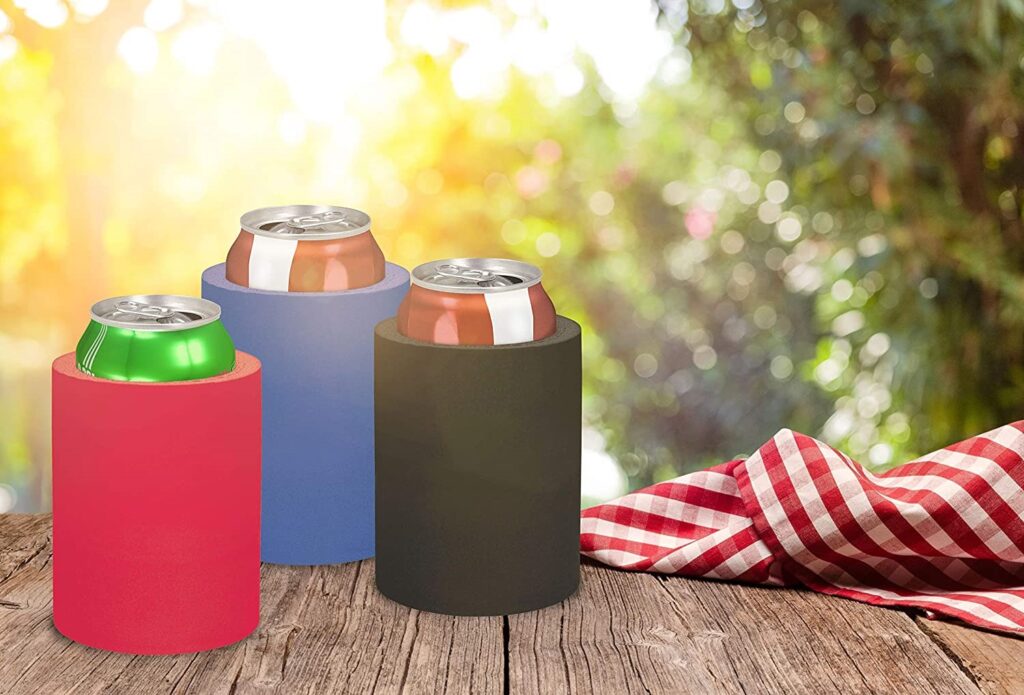
Most drinkers know what koozies are. It keeps people’s drinks (bottled or canned) cold. But these things actually have an interesting backstory filled with information, a lot of info most people knew nothing about.
These can, or bottle huggers are old, really old
The name koozies or coozies was originally a trademark of Radio Cap Corp – a company from Texas. It was trademarked in 1980. The company let the registration lapse in the early 2000s, which means coozies are pretty old.
For more info about the history of this product, check out this site for details.
They go by more than ten different names
According to an old saying: People can tell how important something is in a group of individuals by how many names the thing has. For instance, Eskimos have fifty name variations in snow. Coozies are for rednecks what snow is to most Eskimos since rednecks have at least ten name variations for this thing, including:
- Bottle jacket
- Can jacket
- Beer sleeve
- Bawdle
- Can cooler
- Bottle cooler
- Coldy-holdy
- Coolie
- Coozie
- Cozy
- Beer huggies
- Beer hugger
But people need to tip their hats to Australians for the best name; they call these things stubby holders.
Coozies has been in an on-and-off dispute over a couple of years in the 2000s. Two organizations are at war over these lovable drink holders. A company named Norwood has been in a bitter dispute over the trademark status of the name Koozie with an online business called Kustom Koozies.
According to Norwood, names like beer hugger, huggies, and can cooler don’t infringe its trademark, but the term Koozie, coolie, cozy, and coozie do. The online retail business Kustom Koozie asserted that the trademark had been a generic name.
Kustom Koozies and Norwood came to an agreement after years of dispute over the use of the term. Still, by 2009, they were in disagreement again, as KK unsuccessfully attempted to cancel the deal in response to the other party’s instruction to make certain changes to their website. One of the changes was the name Koozie should be set out in all CAPS as KOOZIE. Another change is the (R) symbol to be used to identify the genuine Norwood product. It is like the McCoys and Hatfields all over again.
Want to know more about neoprene? Click https://www.britannica.com/science/neoprene for info.

Can or bottle huggers keep drinks cold in several ways
Everyone knows that these things keep beers cold, but they work in different ways. Can or bottle huggers effectively insulate beverages from heat through both external infrared and conduction sources like strong sunlight, warm air, or hand. Using can or bottle coozies minimizes the rate of drink warming in the sun by more or less 50{49084405d04fc0ca552a04467576eda57f0eb8909390a83811cf5e6d127a6184}.
Conduction is the energy transfer through things from particle to particle. Conduction is the distribution and transfer of heat energy of a substance from atom to atom. For instance, a spoon in a coffee mug of hot coffee becomes warmer because the heat from the hot water is conducted along the spoon.
All can or bottle huggies are not created equal
These beer koozies have evolved in both style and material. The materials used in which these things have been made include closed-cell foams, plain foams, neoprene, and Ethylene-vinyl Acetate Copolymer foams. Some firms create coozies for forty-ounce bottles; other firms adjust to find different sizes of bottles or cans.
The materials used to make these things are designed to insulate enclosed beverages from outside sources of radiant properly, as well as conducted heat like heat from the sun or a hand. Some can, or bottle huggies used Styrene-butadiene Rubber Neoprene is used for 12-ounce cans or bottles. The cost of Styrene-butadiene Rubber neoprene is a lot lower. It helps companies save a lot of money on material costs.
In conclusion
These things do work. Obviously, their efficiency and effectiveness level vary depending on numerous factors like packaging materials (bottles or cans), as well as time spent on the mouth or hand (something people were not able to measure since public drinking is legally frowned upon in big cities).
Still, a lot of experts are able to gauge a pretty noticeable difference in every test case they perform. The takeaway? People need to stock up because the only bad beer is warm (well, some likes it warm) or hot beer. It is better to spend some money on these things than drink hot beer and not enjoy the moment.